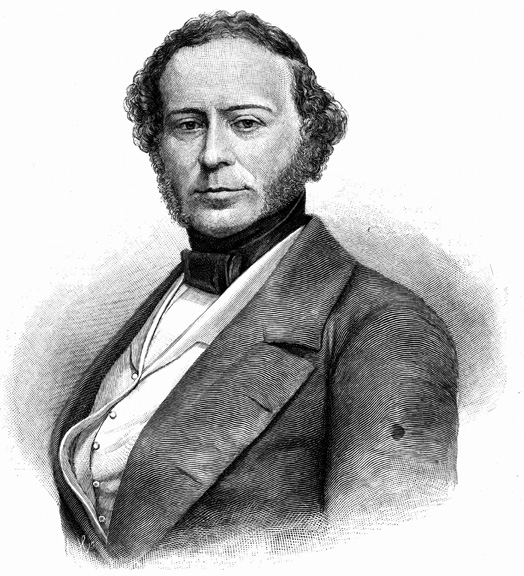Building Sustainable Communities

Shelter is one of woman's fundamental needs. How large, how attractive, how functional the shelter is an expression of man’s desire. The cave or a hollowed out tree could be considered one of the original green structures. All early building was indigenous. People used what was immediately available: wood in New England, sod on the Great Plains, clay in the Southwest, ice in Alaska. There was no choice but “green” building materials and methods.
As humankind, its shelter needs and construction methods became more advanced, many 20th century developers lost touch with the inherent benefits of green building. “Most conventional practitioners of modern design and construction find it easier to make buildings as if nature and place did not exist. In Rangoon or Racine, their work is the same,” explains green building pioneer William McDonough in the preface to Big and Green: Toward Sustainable Architecture in the 21st Century (Princeton Architectural Press, 2002).
But all along, a small faction of builders and planners has worked to incorporate green building into the mainstream world (see related Bicycle City article for major sustainable development influencers). The collective eco-friendly mindset and resulting benefits at environmental and economic levels is shifting the development pendulum to incorporate sustainable development at a mainstream level. Architects, builders and community developers can increasingly tap into numerous sustainable options to create homes, neighborhoods, businesses, institutions and entire cities. Such construction not only utilizes green materials and environmental impact planning, but also taps into natural resources for energy efficiency. Bicycle City developers are committed to draw from both historical and newly devised eco-savvy planning and building trend to minimize potential development’s environmental impact while maximizing renewable resources and a sense of community.
The Beginnings of Eco-Friendly Development
Until the early part of the twentieth century, man had little choice but to adapt his lifestyle to the climate in order to live in harmony with his environment. His primary goal was to be able to moderate indoor air temperature, explains Building Design & Construction’s “White Paper on Sustainability: A Report on the Green Building Movement”.

The paper outlines the timeline and causes for green building in America. Heating the indoors was relatively easy as a modern adaptation of the harnessing of fire, with refinements producing cleaner indoor air quality. Cooling was another matter, since in nature cooling is a function of weather patterns and microclimates. Prior to World War II, passive solutions to the challenge of cooling structures were devised. To decrease the heating effect of the sun, early skyscrapers utilized deep-set windows such as those found in New York’s Flatiron Building or awnings such as those installed at Chicago’s Carson, Pirie, Scott & Co. building. Window shades, operable windows and roof gardens were other early innovations.
The 1930s saw the introduction of early air conditioning, low-wattage fluorescent lighting, structural steel and reflective glass, advents that created the ‘new’ steel-and-glass box urban architecture. Architects no longer had to consider site selection, prevailing winds or even the windows that opened to ensure airflow. The advent of air conditioning may have been the single invention that tipped the scales from man’s cooperation with his environment to his dominance over it.
In 1941, the bombing of Pearl Harbor catapulted the United States into World War II and the ensuing “war effort” jumpstarted both American ingenuity and the U.S. economy. The urgency and immediacy of the war compelled American business and industry to quickly find new and effective solutions to wartime demands. By the war’s end, American industry had created tremendous capacity for production and needed an outlet. Fueled by servicemen returning to their families who needed housing – fast – the construction industry filled the void with new materials (plastic) and new techniques (prefabricated structures) developed during the war. The housing shortage of the late 1940s, together with the arrival of the “baby boom” generation, created yet another explosion, the Post War Building Boom of the 1950s. Construction of the interstate highway system in the 1950s laid the groundwork for the appearance of the subdivision and urban sprawl, and “housing starts” became the bedrock of the U. S. economy.
All along the building industry development, a few persistent voices continued to express skepticism about the validity of avoiding Nature. In 1962, the publication of Rachel Carson’s book Silent Spring examined the potentially toxic effects of human lifestyle on the environment and generated a serious interest in ecology. The decade of the 1970s spawned a number of environmental and ecological milestones, including the first Earth Day on April 1, 1970. The OPEC oil embargo in 1973 was the first time many Americans came face to face with the idea that global oil resources were, in fact, finite. In 1977, the Department of Energy was created as a separate Cabinet department to address energy usage and conservation. The 1980s saw architects and governments cooperating to address the idea of renewable resources and incorporating energy efficient systems into building practices. In 1992, the United Nations Conference on Environment and Development, the so-called Earth Summit, passed a blueprint for achieving global sustainability, the Rio Declaration on Environment and Development. Words like ecology, biodiversity and sustainability began appearing in everyday conversations. In 1993, the U. S. Green Building Council was incorporated, the Greening of the White House took place and the President’s Council of Sustainable Development was established. Throughout the 1990s, federal and state agencies and programs to support energy efficiency and sustainable development were created.
Stelle, Ill.: A Real Life Example of a Sustainable Community
Located midway between Chicago and Champaign, Illinois, Stelle was originally founded in 1963 as a private community fostering the values of individual human development. It has evolved to become a model of a sustainable community encompassing alternative concepts of all kinds, from garden co-ops to renewable resources featuring community ownership and operation of water and sewage treatment plants. The town’s current population of 120, made up of 50 homeowners and tenants, governs via automatic membership in the Stelle Community Association.
Stelle’s infrastructure exemplifies the use and integration of self-sufficient, alternative, solar and wind technologies. The town’s water pumps are powered by a wind turbine interconnected to the electrical grid. Stelle Telephone Company is the town’s completely solar-powered telephone and internet provider company. The solar powered telephone mutual is the first off-grid, solar powered, end-of-line phone switch in North America. The town’s corporate citizens are like-minded; for instance, Stelle is home to the Midwest sales office of SunWize Technologies, a solar power manufacturer.
Stelle’s private homes offer examples of diverse construction, ranging from earth berm to straw bales. Other homes incorporate solar panels, passive solar design and wind power. Stelle’s deep and abiding belief in sustainability also extends to organic gardening and cooperatives for food, gardening, tools and education. The community is a fascinating example of self-sufficiency and may well serve as a paradigm for future sustainable communities.
A Green Boom?
The future of green building is filled with exciting potential. As with any movement, a number of elements must come together to achieve critical mass, explains The University of Michigan’s 2005 handbook, Building Green for the Future: Case Studies of Sustainable Development in Michigan. The publication offers a comprehensive guide to all aspects of building green
First the visionaries: people with creative minds who just want to play with a seemingly impossible concept and see where it goes. They try different concepts, learn from their mistakes and winnow out the useful information. Next the initiators materialize. They look at the ideas and begin to transform them into actual prototypes, trying different methods and discarding what doesn’t work, building and elaborating on what does work. Then facilitators take the prototypes and apply on a broader scale. They know where to take the models to reach a broader audience and gain a foothold in the marketplace. Finally, the capitalists appear to transform the models into practical financial equations that balance investment and profit opportunities. Energy efficiency, alternative power and green development concepts all exist at different places on this continuum.
The other necessary ingredient to vault a movement into the public’s consciousness is the outside force: the cost of oil. In the U. S., the wallet ultimately forces people to begin rethinking their beliefs. And that is when a paradigm shift can finally occur, the Michigan paper asserts. The stage is set for green building to emerge as a viable entity in the American lifestyle; the skyrocketing cost of an oil-dependent economy may be the trigger to set it in motion.
The subject of the financial feasibility of green development is directly addressed in Building Green for the Future. The authors illustrate their points with in-depth case studies of commercial, educational, residential and institutional green buildings constructed in Michigan, covering everything from the history of the project to “lessons learned” to the all-important Bottom Line. While the environmental and social aspects of the green building movement are almost universally viewed as positive, the financial benefits are still under scrutiny. As with any new technology, as the number of completed projects increases, costs drop. The misperception that green buildings are significantly more expensive is due in part to the sustainable technologies learning curve and an unclear concept of green buildings, according to the handbook. These issues in a section titled “Green Development Perceptions and Realities” and dispute arguments that “green” is not financially feasible and hard to justify, the two most cited reasons for not building green.
Full Circle
Many green building concepts a full circle with the early science of building, when common sense was not such a rare commodity. Simple ideas like appropriate site selection and indigenous material use have gained new importance in the green building movement and can be integrated with technologies featuring energy-efficient products and appliances to produce environmentally friendly and comfortable places to live and work. “Green buildings are simply products of intelligent, integrated design that meet or surpass the requirements of any standard development project,” the Building Green paper explains.
A well capitalized and motivated relatively new force is Elon Musk and his vision of solar power for the batteries to power his company's Tesla vehicles but for society in general. Solar City's Giga Battery Plant in Nevada is a game changer.
Green building research, concepts and products continue to evolve along with increasing public consciousness. Governments are increasingly supportive, with establishment of federal agencies such as the U. S. Green Building Council and with an, the stage is indeed set for yet another building “boom,” this time a ‘Green Explosion.’





